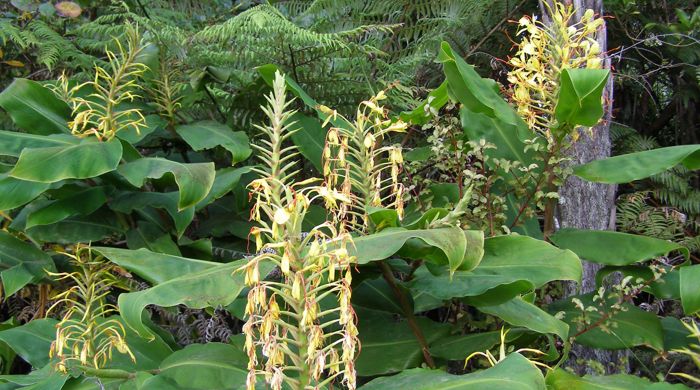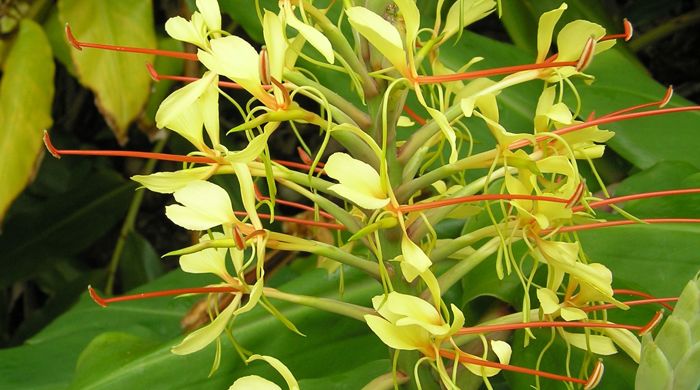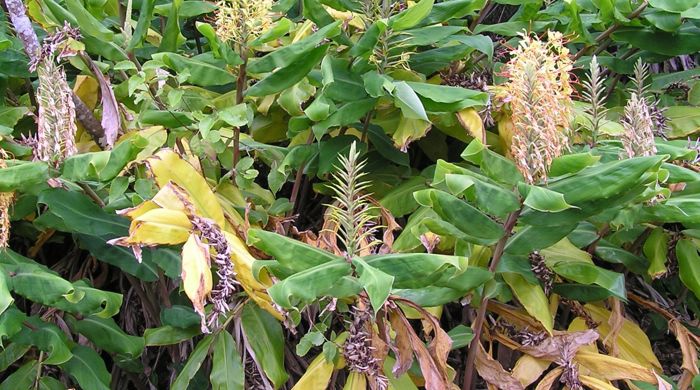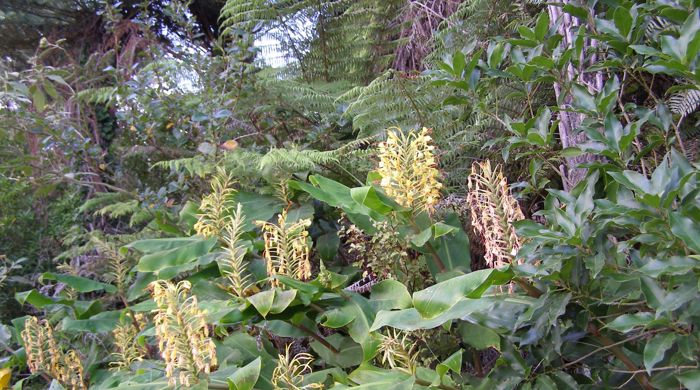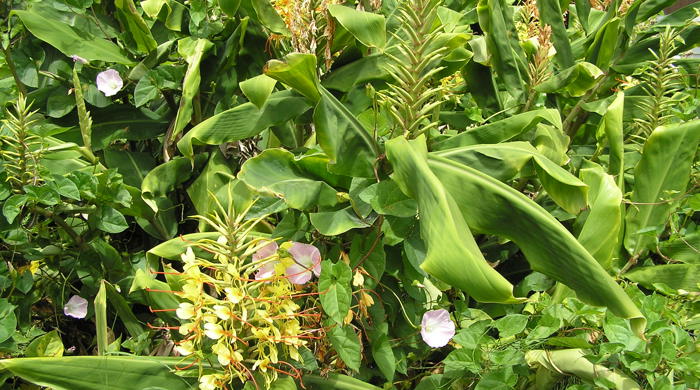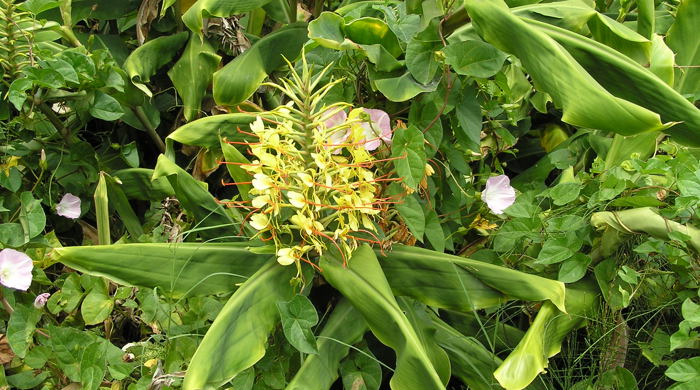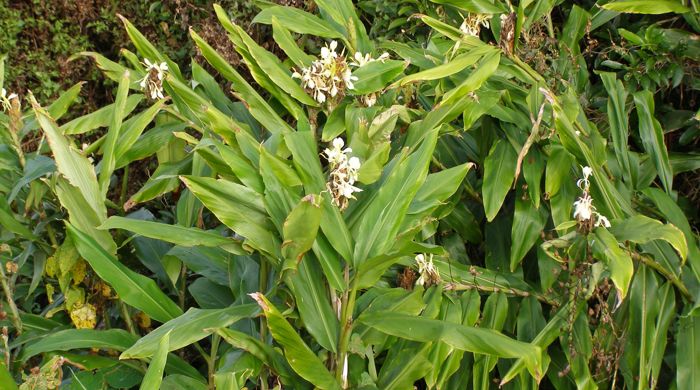Hedychium gardnerianum and H. flavescens
Wild ginger
Also known as:
Kahili ginger, yellow ginger
Family: Zingiberaceae
Origin: South Africa
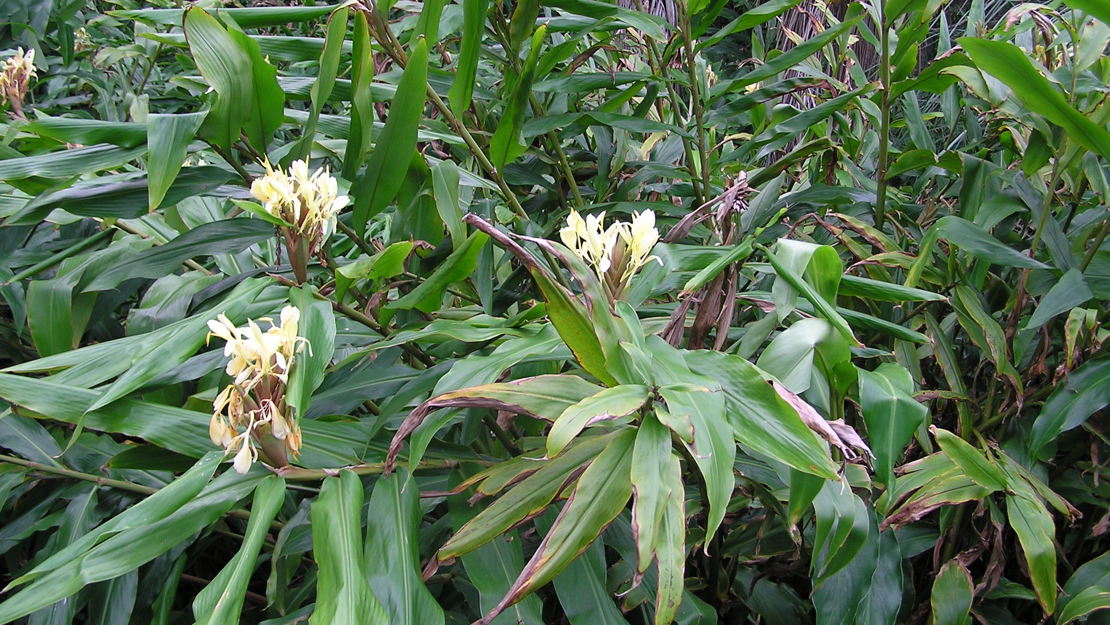
Regional Pest Management Plan (RPMP) status
- Aotea — Eradication
- Waitākere Ranges Heritage Area priority status
- Whole region — Sustained control
- National Pest Plant Accord Species
- Parkland with Significant Ecological Areas — Site-led (on-park and buffer)
General description
Perennial herbs < 3 m tall. Surface rhizomes are large and branching. Leaves are large and green. Flowers are scented, borne in spikes, yellow with red stamens in H. gardnerianum and creamy yellow in H. flavescens. Fruits are fleshy and orange.
What you need to know
To help protect our environment:
- You must not breed, distribute, release or sell wild ginger. As wild ginger is a National Pest Plant Accord species, these restrictions apply within the Auckland region and across the whole of New Zealand.
- You must not plant wild ginger within the Auckland region, unless you are transferring an existing plant on your land to another location within the boundaries of the same property.
- You must destroy any wild ginger on land that you occupy if it has been planted in breach of the above rules and you are directed to do so by an authorised person.
- If you occupy land within the buffer area of a park where wild ginger is being managed, you must destroy all wild ginger on that land. View a map of park buffers where this applies. To find out more about how we’re protecting Auckland’s parkland from pest plants, visit our pest plant buffer pages.
Auckland Council will control wild ginger at all sites within the Aotea/Great Barrier Island group where it is known to occur.
If you see wild ginger anywhere on Aotea/Great Barrier Island group, please report it to Auckland Council at pestfree@aucklandcouncil.govt.nz.
Habitats
Forest, forest and riparian margins, shrublands, fernland.
Dispersal
H. gardnerianum seed dispersed by birds. Vegetative spread from rhizome fragments. Human-mediated dispersal through dumping of garden waste.
Impact on environment
Forms dense stands, suppressing native vegetation and preventing recruitment. Potential to change forest composition. May increase erosion and alter decomposition and nutrient cycling patterns.
Control
Site Management
Follow up treated areas 3 times per year. Encourage natural regeneration of native plants or replant treated areas where possible after 2-3 treatments to establish dense ground cover and minimise reinvasion.
Recommended approaches
Physical control
Method: Cut stems and dig out rhizomes.
Plant parts requiring disposal: Seeds and rhizomes.
Disposal options: Small amounts can be rotted in a covered water barrel or remove to greenwaste or landfill.
Biocontrol
Biocontrol is currently not available for this species.
Community agrichemical control recommendations
No qualifications:
For small infestations only: Cut stump and paste freshly cut rhizomes with a small amount of metsulfuron gel.
Basic Growsafe certified: Cut stump and spray freshly cut base with 1g metsulfuron-methyl per 1 L of water. For areas of wild ginger under native forest reduce rates to 0.5g metsulfuron-methyl per 1 L of water.
Caution: When using any herbicide or pesticide please read the label thoroughly to ensure that all instructions and safety requirements are followed.
